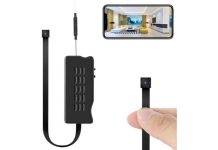More and more companies have recently been using 3D printing in their manufacturing processes. Also known as additive manufacturing, this printing method involves creating three-dimensional objects by layering materials on top of one another. It allows manufacturers to design any object using an idea on a computer and printing it without wasting material.
The most significant benefit of 3D printing is that it allows manufacturers to create customized products in a few hours instead of producing huge batches that often take months to finish and ship out. As such, many industries—especially those dabbling in technology gear—have utilized this method in their operations.
In this article, we’ll discuss how 3D printing helps innovate current technologies like wearables, augmented and virtual reality, and smart home devices.
How 3D Printing Revolutionizes Current Technologies
Wearables: Merging Fashion with Functionality
Wearables comprise a wide range of devices worn on the body that seamlessly integrate technology into people’s daily lives. These devices incorporate technology into fashion, focusing on bringing functionality to accessories.
For example, watches have become more than just a way to tell time. The invention of smartwatches has enabled people to control and use smartphone features on their wrists—whether calling someone over the phone or sending a text message. However, what further enhancements are achievable for wearable technologies when utilizing 3D printing?
-
Enhances designs
3D printing has eased the creation of intricate and unique patterns, textures, and shapes that are challenging to achieve through traditional manufacturing methods. It has allowed manufacturers to produce complex geometries, lattice structures, and organic shapes.
As a result, these wearables have become more fashionable for everyday wear with their visually striking design.
-
Enables rapid prototyping and iteration
Designers and manufacturers can iterate and refine wearable designs quickly with 3D printing. It helps them further explore form factors, features, and functionalities to improve their devices. Simply put, it accelerates the development cycle for more efficient product improvement.
-
Expands material options
3D printing also provides various material options for wearable devices, such as thermoplastic polyurethane (TPU). This flexible and durable material can help create comfortable yet resilient wearables. Metals like titanium and stainless steel are also viable for 3D-printed wearables, giving the devices a more premium design.
Selecting materials based on their unique properties enables manufacturers to produce wearables with enhanced functionality and aesthetics.
AR/VR Devices: Immersive Experiences Redefined
AR and VR technologies have transformed how individuals interact with digital content. They have opened up new dimensions, giving users a more immersive experience with their brand. So, what are these two technologies?
AR allows marketers to overlay virtual elements onto the real world as seen on a screen, enhancing the perception and interaction with the environment. On the other hand, VR immerses users in a simulated and computer-generated environment, completely replacing their physical surroundings. Some AR/VR devices include headsets, goggles, and controllers—enabling users to engage with these virtual worlds.
Integrating 3D printing with these technologies has brought significant advancements, pushing the boundaries of immersion, comfort, and customization.
-
Improves comfort and ergonomics
Individuals may feel uncomfortable using AR/VR devices for prolonged periods due to their heavy weight and bulkiness. However, 3D printing offers the ability to create better-fit components to solve these challenges.
Manufacturers can design headsets that distribute weight evenly across the user’s head to reduce strain and discomfort. Additionally, they can include customizable features, such as adjustable straps and modular designs, for a more personalized and comfortable fit. These features can provide an immersive and enjoyable AR/VR experience.
-
Enables complex and intricate designs
The intricate nature of AR/VR devices requires precision in design and manufacturing, primarily in components like lenses, screens, and tracking sensors. Otherwise, users may experience VR motion sickness. To avoid this, manufacturers can deploy 3D printing to produce intricate lens holders, adjustable mechanisms, and optimized structures with high accuracy.
In effect, they can enhance the overall aesthetics and functionality of AR/VR devices, contributing to a more refined and immersive user experience.
Smart Home Devices: Personalization and Efficiency
Smart home devices have transformed living spaces in recent years. They help homeowners automate and control many aspects of their home, turning it into an interconnected ecosystem enhanced for convenience, security, and energy efficiency. They can change lighting and room temperatures, check security systems, and open their TVs with just one tap or voice command.
More than that, individuals can leave their homes without worrying about their appliances. They can remotely control their smart home devices from their phone, tablet, or computer—just as long as they are connected to the internet.
With the rise of 3D printing technology, these smart home devices can expect numerous innovations for better personalization, efficiency, and sustainability.
-
More personalized and customized designs
Smart home devices can accommodate more user-friendly designs. For instance, manufacturers can create a 3D-printed smartphone dock that fits any device and incorporates additional features like wireless charging or built-in speakers.
They can also use 3D printing to design and produce accessories that seamlessly integrate with home decor and account for different needs and preferences.
-
Introduces new features for small-scale productions
The customizable advantage of 3D printing enables small-scale production of smart home devices that help individuals and small businesses bring their innovative ideas to life. They can create devices that cater to niche markets with specific needs. In effect, smart home devices can become more accessible as suppliers increase.
-
Improves functionality
On top of creating visually appealing features, manufacturers can develop smart home devices that ensure efficient and reliable performance. They can produce parts that can further optimize functionality without sacrificing aesthetics.
Empowering Innovation with 3D Technology
3D printing is a powerful technology that can help improve technological gear. Manufacturers can develop technologies that better integrate function with form while providing users with the best experience possible. Moreover, 3D printing enhances the benefits of these technologies, making life more convenient.
That said, it’s best to explore the world of 3D printing and these technological gears to understand further their potential to make people’s lives easier.
































